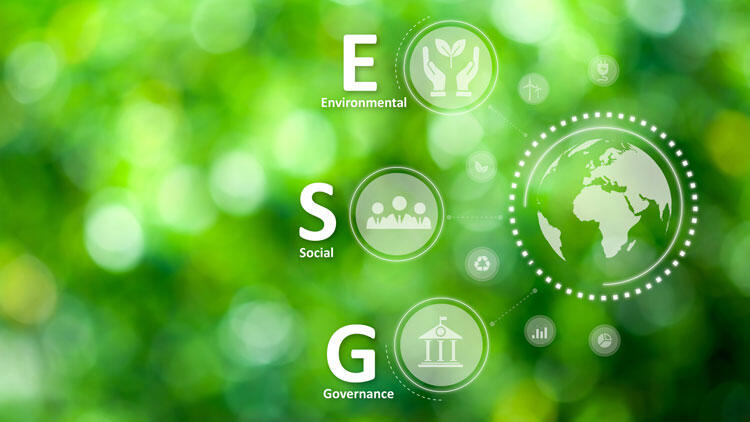
Sustainability is an issue that’s gaining increasing attention from investors, consumers, and regulators. But what does sustainability mean for your business? And how can you stay on top of this increasingly complex subject? Here are some tips to help you manage your ESG compliance strategy:
ESG Compliance & Environmental, Social, and Corporate Governance
ESG compliance is a way to ensure that companies are being socially responsible, environmentally responsible, and ethically responsible.
With ESG compliance in mind, it’s important to understand what your company is doing right now to be environmentally friendly. You never want to be put on the spot by an auditor or third party asking questions about how your business has handled its environmental responsibilities over the years.
ESG Stands for Environmental, Social and Corporate Governance
ESG stands for environmental, social, and corporate governance. While it’s a bit of a mouthful, ESG is a set of non-financial metrics that measure the social and environmental impacts of an organization’s activities. In other words, ESG helps you assess your company’s performance in terms of its impact on society and the environment.
The Risks of Not Complying with ESG Standards
In the past, ESG compliance was an optional practice, but as a growing trend, it will become more important in the future. In fact, if you don’t have an ESG strategy in place now, your competitors will start to gain an advantage over you.
If you are not yet compliant with these standards, it is time to get started! The best way to begin is by assessing your company’s current practices and determining how well they align with accepted standards of ESG performance. This can help determine how much work is needed before becoming fully compliant with these new requirements from customers such as investors and consumers alike who want companies like yours operating in ways that protect both people and the planet alike for generations into the future (LINK).
The Different Types of ESG Compliance Audits
ESG compliance audits are an important part of managing ESG risks. They can be performed by internal or external auditors, and they help to identify any gaps in your organization’s ESG-related policies and procedures. There are three main types of ESG compliance audits:
- Internal Audit – An internal audit is conducted by employees who work within the company’s structure, often on a periodic basis. This type of audit is typically less expensive than an external audit but may not provide as much insight into how well your company is performing in terms of environmental impact or social responsibility because it doesn’t involve any third-party involvement. It also doesn’t take place outside of the workplace environment; so if you want to see how your employees interact with clients and customers at events like trade shows or community gatherings, you might need to consider getting another type of audit done as well (external).
- External Audit – An external audit involves hiring a third-party consultant or agency that has no relationship with your business but specializes in providing these types of services (such as Green Business Certification Program Consultants). These consultants will perform their own inspection based on specific criteria related specifically toward meeting regulatory requirements specific towards environmental sustainability practices such as LEED certification programs offered by AIGA (Architecture In Green) which focuses primarily on designing green buildings while minimizing their carbon footprint through innovative building materials such as solar panels etc., whereas other examples include following LEED guidelines which focuses mostly on reducing energy consumption through high efficient heating systems installed throughout public buildings such as schools campuses etc., whereas still other examples include following ISO standards established by International Organization for Standardization where organizations around world adhere voluntarily follow similar protocols when establishing company policies regarding how products should be manufactured responsibly without causing undue harm toward people living nearby manufacturing sites or workers employed making those products.”
How to Manage ESG Compliance
ESG compliance is a risk management issue. It’s a strategic issue. It’s an integrated business process. And it’s a legal requirement—not just in the U.S., but also in many other countries around the world such as Canada, Germany, and Brazil.
The good news is that you can be compliant with your ESG legal and regulatory requirements without making any changes at all! The bad news is that you must start now if you want to achieve this goal!
How Competitive is your ESG Strategy?
Your ESG strategy defines the organization’s vision, mission, and goals. It consists of a set of core principles that guide your decisions on environmental, social, and governance (ESG) issues.
When it comes to sustainability, most companies are just beginning to figure out how best to manage their ESG risks. They have started by developing an understanding of those risks through internal due diligence, but they often lack clear strategies for addressing them or confidence in their ability to do so effectively.
Some organizations are using external consultants or service providers to help them implement an operational framework based on recognized standards — such as ISO 26000 or the UN Global Compact — while others are focused more on compiling data needed for reporting purposes under various regulatory regimes (such as Dodd-Frank). A few firms might even be backtracking after being penalized by regulators for not being prepared enough when a crisis hit; still, others may simply be trying out new technology solutions when they feel overwhelmed by unexpected events such as cyber attacks.”
Managing ESG Risks
The most important thing to remember is that ESG risks are a part of the overall business risk. The key to managing an organization’s ESG risks is to have a strategy that reflects this reality.
In order to implement an effective ESG strategy, you need to know what your company’s goals are and how they’re aligned with your business model. You also need to understand what policies or practices would help you achieve those goals while minimizing risk exposure.
How can you stay informed about risk management and sustainable investment?
ESG risk management is a key element in sustainable investment. Sustainable investment is a key element in ESG compliance. ESG compliance is a key element in sustainability reporting.
So how can you stay informed about these elements?
Here’s what you need to know:
How does your organization manage information risks on ESG sustainability issues?
For example, how do you manage information risks on sustainability issues? Are there gaps in your processes and procedures for managing sustainability-related information? Do you have the right tools and technology to effectively analyze and report on sustainability performance?
The answers will likely reveal areas where an ESG Sustainability Compliance Strategy can help you improve your organization’s sustainability program.
What sort of sustainability issues concern you most as an investor or corporate manager?
You probably know that sustainability issues are important to your company, but what exactly do you need to think about? The most common sustainability issues in the world today are climate change, water scarcity, and biodiversity loss.
- Climate Change: Climate change is one of the biggest challenges facing us all. It’s caused by an increase in greenhouse gases like carbon dioxide which trap heat and make our planet warmer. This can have an impact on everything from rising sea levels to more extreme weather patterns such as floods or droughts.
- Water Scarcity: Water is a finite resource and we need it for survival so access to clean water is crucial for everyone across the world but especially for people living in developing nations where many lack basic sanitation facilities like toilets that use flushable water or running taps with hot showers available at all times (for example).
- Biodiversity Loss: The loss of biodiversity has wide-ranging effects from decreased crop yields due to pests becoming resistant – resulting in higher food prices – to increasing medical costs due longer term conditions such as heart disease caused by pollution; not just those who live near industrial sites but globally too!
Conclusion
Sustainability is the responsibility of every corporation today. It’s important to think about how we can protect our environment and define more sustainable business practices. ESG compliance gives businesses information on how they can improve their internal operations as well as how they make decisions on what products they will sell. This helps them make good decisions that benefit both their employees and customers. It’s time to start incorporating ESG considerations into your sustainability strategy by selecting a vendor who can help align the organization, increase visibility, and simply the required reporting and disclosures.

Rahul Asthana has a PhD in Operations Management from the Anderson School at UCLA. He has 25 years of experience in supply chain management, starting his career in IBM working in supply chain operations. He then moved into product management and product marketing of supply chain software while at SAP and Oracle. He manages product strategy and product management at Gainfront. In terms of hobbies outside of work, he really enjoys tennis. Follow Rahul Asthana on Linkedin!


